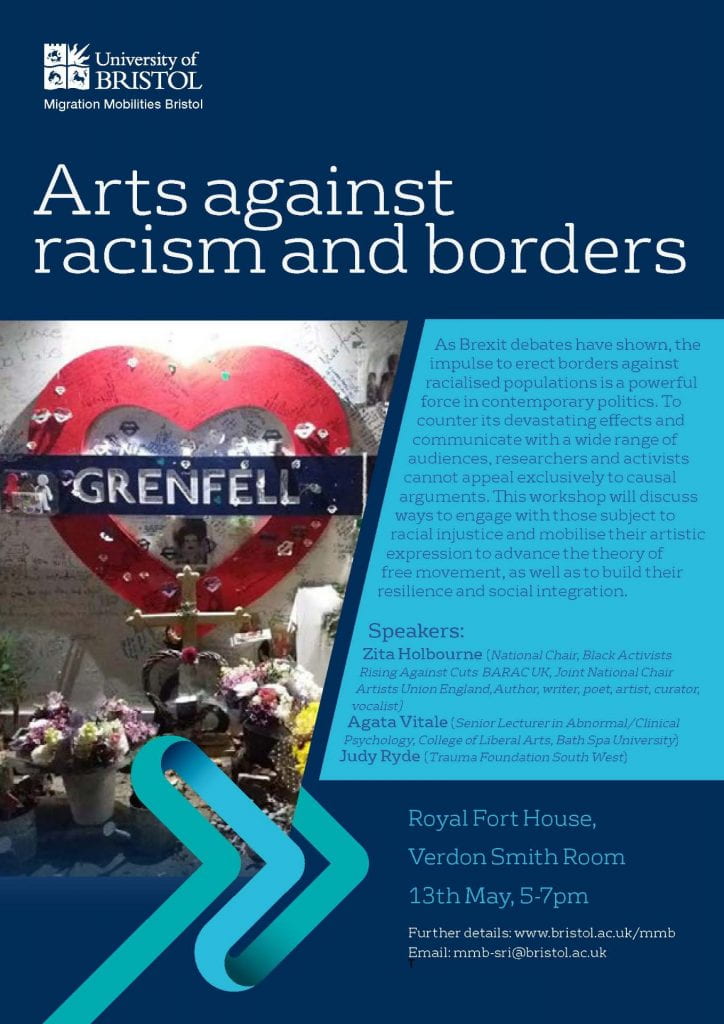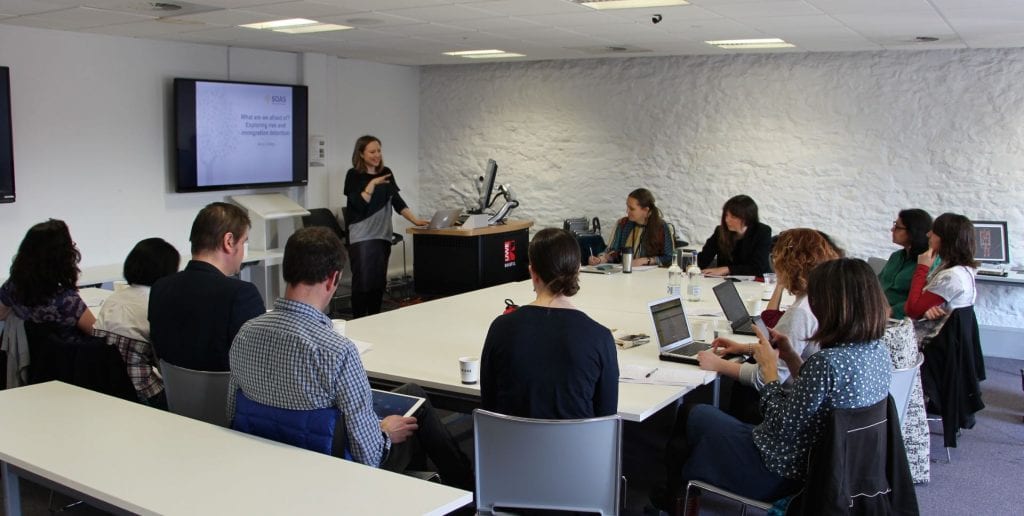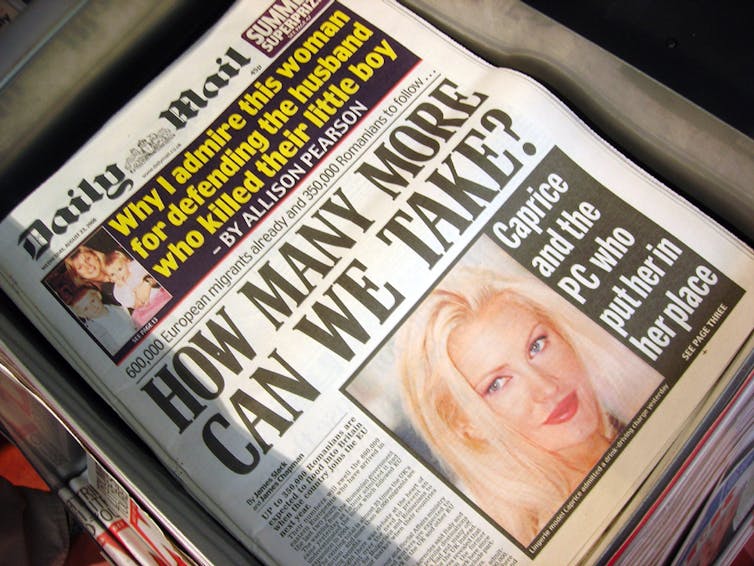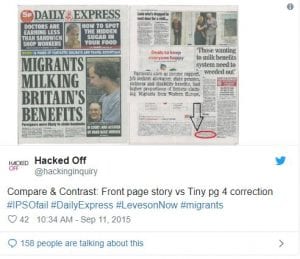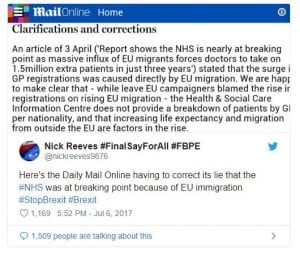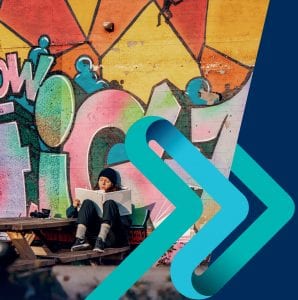By Pier Luc Dupont
The first workshop of the MMB research challenge Bodies, Borders, Justice, entitled Arts against racism and borders, was held in the evening of the past 13 May. A dozen academics from arts and humanities, policy studies, sociology and law gathered in the welcoming Verdon Smith Room overlooking the Royal Fort Gardens to discuss the possibilities of the arts, and particularly the creativity of migrants themselves, to shape public discourses and perceptions of free movement. This is particularly important in xenophobic times which bring to the fore mobility researchers’ ethical duty to engage with the widest possible range of stakeholders.
On this occasion we were able to learn from the rich experience of three outstanding speakers. Zita Holbourne, national chair of Black Activists Rising Against Cuts and joint national chair of Artists Union England, has long been involved in the fight against racism and border controls as an artist and activist. After the Grenfell fire for instance she supported survivors by bringing their artistic work to the attention of a wider public. Agata Vitale (Bath Spa University) and Judy Ryde (Trauma Foundation South West) both participated in a study on arts-based interventions to promote resilience among refugee women living with HIV. Their presentation, offered with Sarah Klein (an arts therapist at TFSW), discussed how the arts can help migrants overcome isolation and express experiences of injustice that can be difficult to formulate verbally.
It was extremely motivating to hear about so many creative ways in which researchers can engage with those who move. The stimulating discussions that followed the presentations also raised important questions, such as:
- How can/should we use artistic work that was not originally created for research or political purposes?
- How can we expand and diversify the audience exposed to this work?
- How can we add an artistic dimension to our mobility-related communications, whatever their format?
- How can class or race privilege be taken into account when engaging with vulnerable creators?
- How can creators themselves benefit from this engagement?
Those who would like to reflect on these issues are welcome to have a look at some of the initiatives that were mentioned in the presentations and discussion:
- webpage displaying the drawings of Hassan Sheikh, a refugee whose experience with arts therapy was movingly described by Sarah;
- the Asylum navigation board developed by the Right to Remain campaign;
- the Voice project at Bristol Refugee Rights;
- the Arts and Social Change group at Bath Spa University;
- a colourful mural co-created in 2012 with a group of disabled asylum seekers to communicate their experience of settlement and exclusion in the UK;
- As Josie Gill helpfully pointed out, Rebecca Scott who co-chairs Bristol University’s BAME staff network can also provide support in building relationships with local BAME communities.
Of course the arts are only one of many ways for academics to learn from those labelled ‘migrants’. To explore socio-legal engagements we invite you to read the judgement on Hostile Environment recently delivered by the Permanent Peoples Tribunal on the rights of migrants and refugee peoples, whose panel of judges was presided by MMB Director Bridget Anderson.


